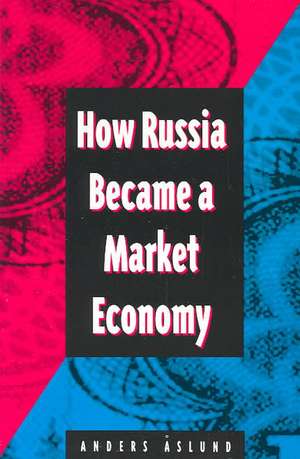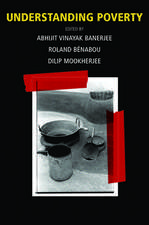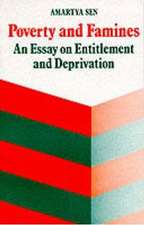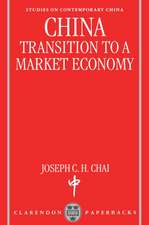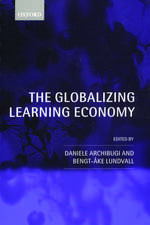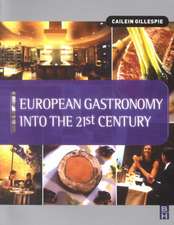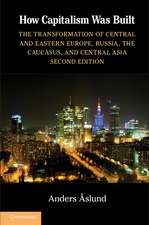How Russia Became a Market Economy
Autor Anders Aslunden Limba Engleză Paperback – mai 1995
The breakup of the Soviet Union and the attempted transformation of Russia into a democracy and a market economy constitute one of the most significant events of our time. A transformation could hardly be greater, yet judgments vary from failure to substantial achievement. This book clarifies that Russia has actually become a market economy.
Anders Aslund provides the most detailed and insightful assessment to date of the Russian transformation from a socialist economy to a market economy. His account covers the period from the formation of the Russian reform government in November 1991 through the autumn of 1994. He discusses the preconditions of economic reform, the formation of a reform program, relations with other former Soviet republics, liberalization, macroeconomic stabilization, and privatization. The final chapter evaluates the transformation.
As a longtime specialist on the Soviet economy and an economic adviser to the Russian government during most of this period, Aslund analyzes the original intentions of the government, what they were able to accomplish, and why they fell short.
The book's general conclusion is that the greater the speed, consistency, and determination, the more impressive the results. The main threat to the reform process was the resistance from the state enterprise managers, who wanted to enrich themselves at the expense of the state. The reformers could only win if they acted swiftly and firmly. According to Aslund, the Russian transformation has not been too quick, as many maintain, but rather too slow.
Anders Aslund provides the most detailed and insightful assessment to date of the Russian transformation from a socialist economy to a market economy. His account covers the period from the formation of the Russian reform government in November 1991 through the autumn of 1994. He discusses the preconditions of economic reform, the formation of a reform program, relations with other former Soviet republics, liberalization, macroeconomic stabilization, and privatization. The final chapter evaluates the transformation.
As a longtime specialist on the Soviet economy and an economic adviser to the Russian government during most of this period, Aslund analyzes the original intentions of the government, what they were able to accomplish, and why they fell short.
The book's general conclusion is that the greater the speed, consistency, and determination, the more impressive the results. The main threat to the reform process was the resistance from the state enterprise managers, who wanted to enrich themselves at the expense of the state. The reformers could only win if they acted swiftly and firmly. According to Aslund, the Russian transformation has not been too quick, as many maintain, but rather too slow.
Preț: 196.60 lei
Nou
Puncte Express: 295
Preț estimativ în valută:
37.62€ • 39.20$ • 31.15£
37.62€ • 39.20$ • 31.15£
Carte tipărită la comandă
Livrare economică 03-17 aprilie
Preluare comenzi: 021 569.72.76
Specificații
ISBN-13: 9780815704256
ISBN-10: 0815704259
Pagini: 404
Dimensiuni: 152 x 229 x 15 mm
Greutate: 0.29 kg
Ediția:New.
Editura: Brookings Institution Press
Colecția Brookings Institution Press
Locul publicării:United States
ISBN-10: 0815704259
Pagini: 404
Dimensiuni: 152 x 229 x 15 mm
Greutate: 0.29 kg
Ediția:New.
Editura: Brookings Institution Press
Colecția Brookings Institution Press
Locul publicării:United States
Notă biografică
Anders Aslund is a senior fellow at the Institute for International Economics and former director of the Russian and Eurasian Program at the Carnegie Endowment. He is an internationally recognized specialist on Ukraine and postcommunist economic
Descriere
The breakup of the Soviet Union and the attempted transformation of Russia into a democracy and a market economy constitute one of the most significant events of our time. A transformation could hardly be greater, yet judgments vary from failure to substantial achievement. This book clarifies that Russia has actually become a market economy.
Anders Aslund provides the most detailed and insightful assessment to date of the Russian transformation from a socialist economy to a market economy. His account covers the period from the formation of the Russian reform government in November 1991 through the autumn of 1994. He discusses the preconditions of economic reform, the formation of a reform program, relations with other former Soviet republics, liberalization, macroeconomic stabilization, and privatization. The final chapter evaluates the transformation.
As a longtime specialist on the Soviet economy and an economic adviser to the Russian government during most of this period, Aslund analyzes the original intentions of the government, what they were able to accomplish, and why they fell short.
The book's general conclusion is that the greater the speed, consistency, and determination, the more impressive the results. The main threat to the reform process was the resistance from the state enterprise managers, who wanted to enrich themselves at the expense of the state. The reformers could only win if they acted swiftly and firmly. According to Aslund, the Russian transformation has not been too quick, as many maintain, but rather too slow.
Anders Aslund provides the most detailed and insightful assessment to date of the Russian transformation from a socialist economy to a market economy. His account covers the period from the formation of the Russian reform government in November 1991 through the autumn of 1994. He discusses the preconditions of economic reform, the formation of a reform program, relations with other former Soviet republics, liberalization, macroeconomic stabilization, and privatization. The final chapter evaluates the transformation.
As a longtime specialist on the Soviet economy and an economic adviser to the Russian government during most of this period, Aslund analyzes the original intentions of the government, what they were able to accomplish, and why they fell short.
The book's general conclusion is that the greater the speed, consistency, and determination, the more impressive the results. The main threat to the reform process was the resistance from the state enterprise managers, who wanted to enrich themselves at the expense of the state. The reformers could only win if they acted swiftly and firmly. According to Aslund, the Russian transformation has not been too quick, as many maintain, but rather too slow.
